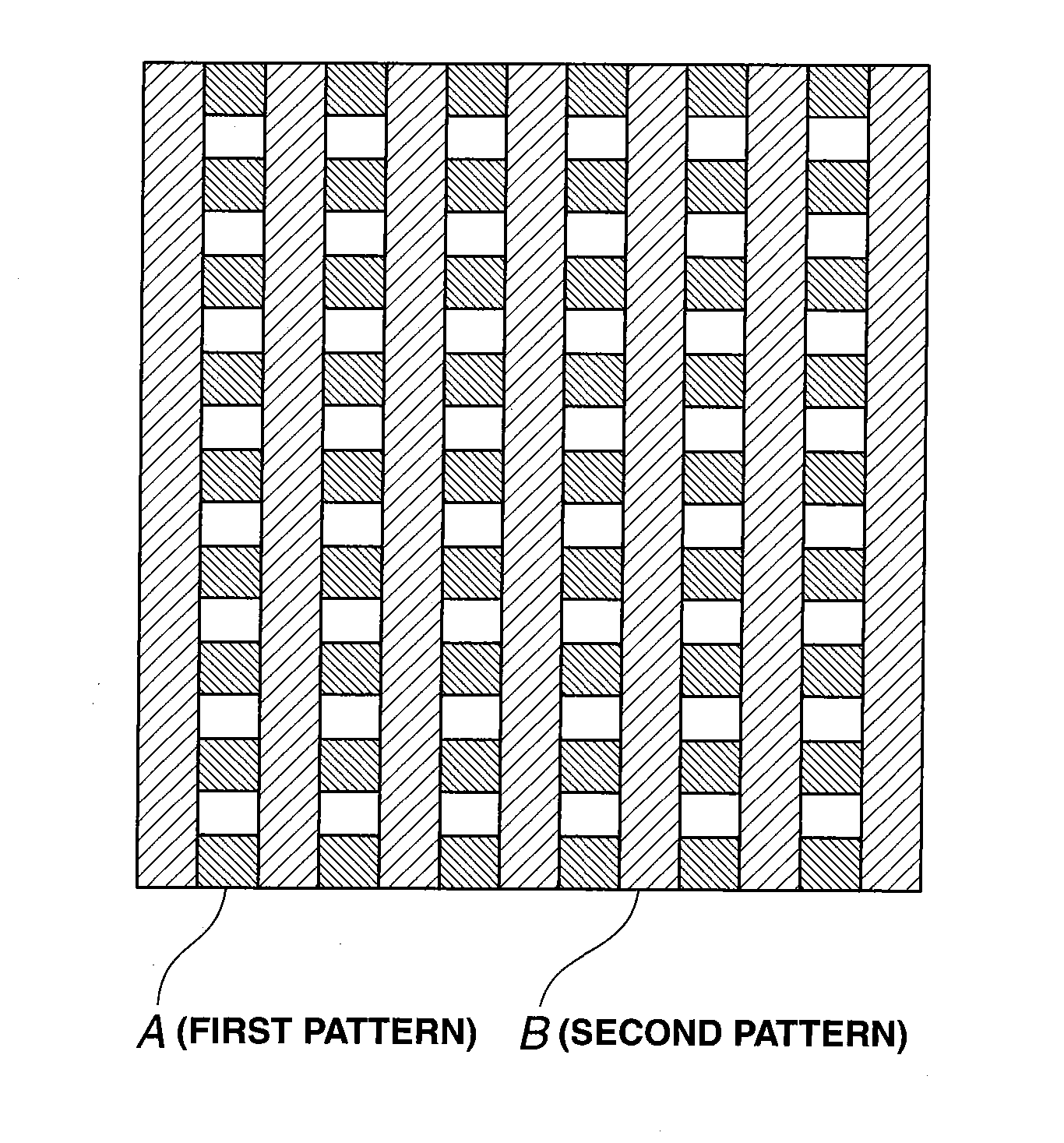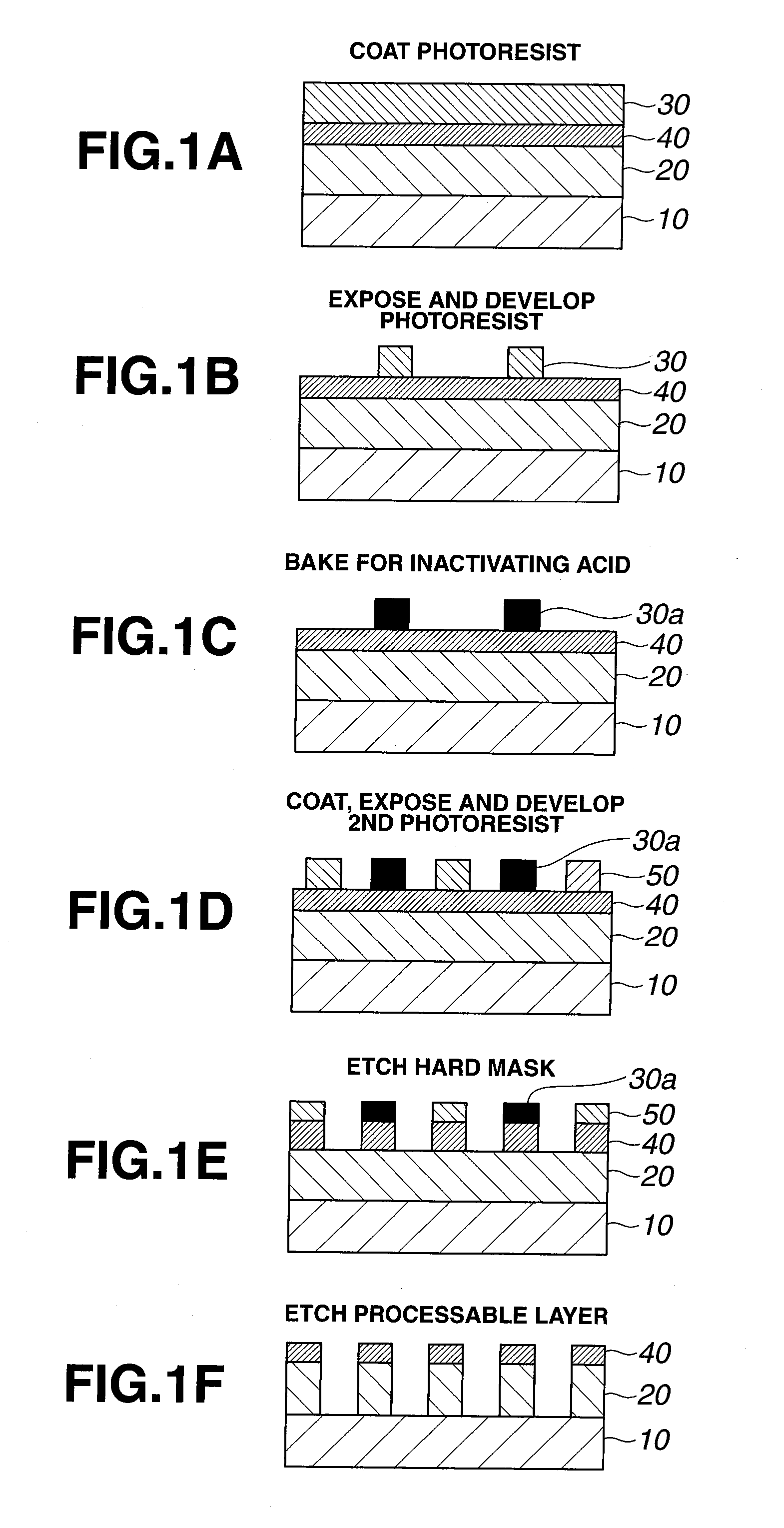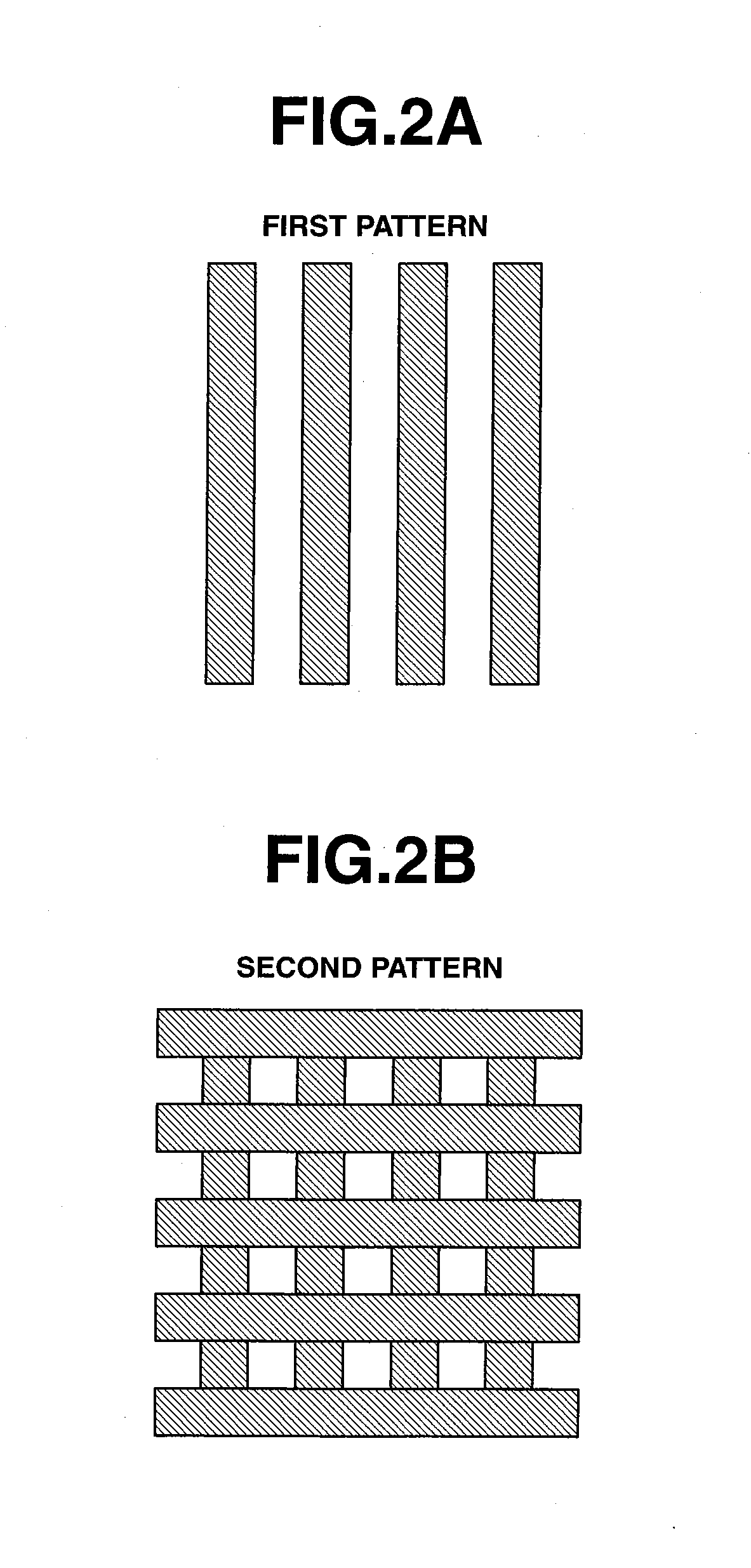Patterning process and resist composition
a resist pattern and resist technology, applied in the field of resist composition, can solve the problems of resist pattern undesired reduction of pattern height or line width, resist pattern misregistration by dry etching, longitudinal shrinkage,
- Summary
- Abstract
- Description
- Claims
- Application Information
AI Technical Summary
Benefits of technology
Problems solved by technology
Method used
Image
Examples
example
[0169]Examples of the invention are given below by way of illustration and not by way of limitation. For all polymers, Mw and Mn are determined by GPC versus polystyrene standards.
synthesis examples
[0170]Polymers to be added to resist compositions were prepared by combining various monomers, effecting copolymerization reaction in tetrahydrofuran medium, crystallization in methanol, repeatedly washing with hexane, isolation, and drying. The resulting polymers (Polymers 1-1 to 1-11, 2-1 to 2-18, Comparative Polymer 1) had the composition shown below. The composition of each polymer was analyzed by 1H-NMR, and the Mw and Mw / Mn determined by GPC.
Preparation of First Resist Composition
[0171]A resist solution was prepared by dissolving each polymer (Polymers 1-1 to 1-11, 2-1, Comparative Polymer 1), an acid generator (PAG1), a base generator (BG1 to 4), a basic compound (amine quencher), and a repellent (for rendering the resist film surface water repellent) in a solvent in accordance with the recipe shown in Table 1, and filtering through a Teflon® filter with a pore size of 0.2 μm. The solvent contained 50 ppm of surfactant FC-4430 (3M-Sumitomo Co., Ltd.). Note that in Comparative...
PUM
 Login to View More
Login to View More Abstract
Description
Claims
Application Information
 Login to View More
Login to View More - R&D
- Intellectual Property
- Life Sciences
- Materials
- Tech Scout
- Unparalleled Data Quality
- Higher Quality Content
- 60% Fewer Hallucinations
Browse by: Latest US Patents, China's latest patents, Technical Efficacy Thesaurus, Application Domain, Technology Topic, Popular Technical Reports.
© 2025 PatSnap. All rights reserved.Legal|Privacy policy|Modern Slavery Act Transparency Statement|Sitemap|About US| Contact US: help@patsnap.com



